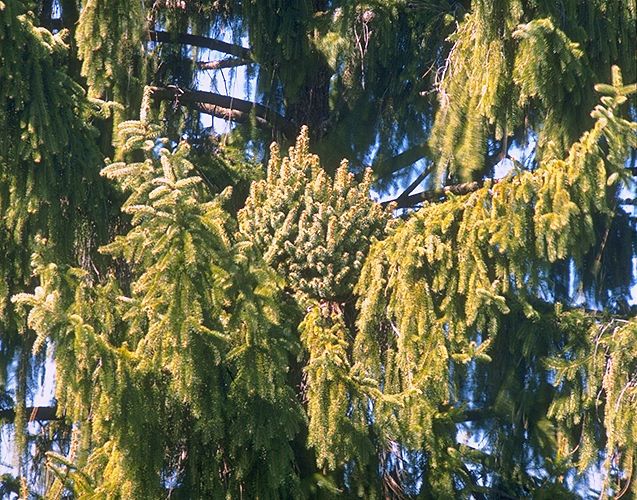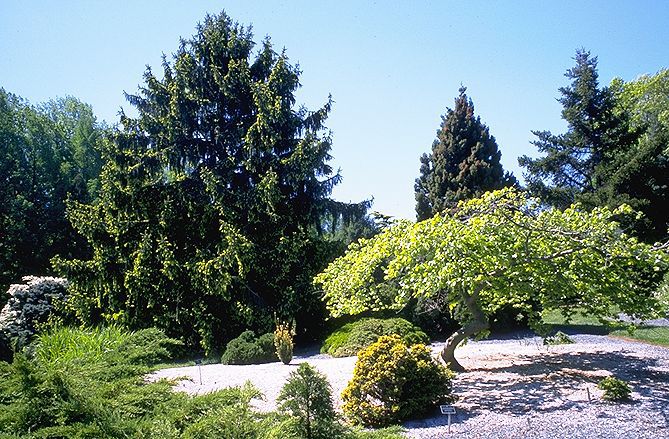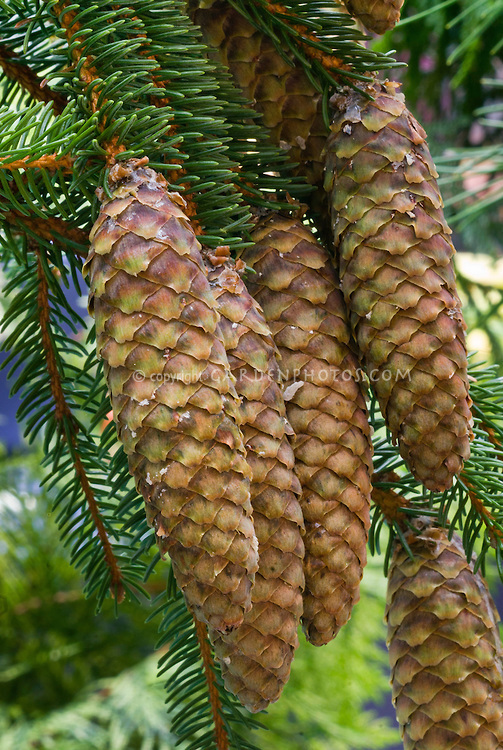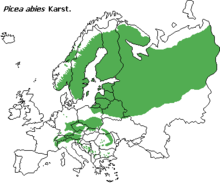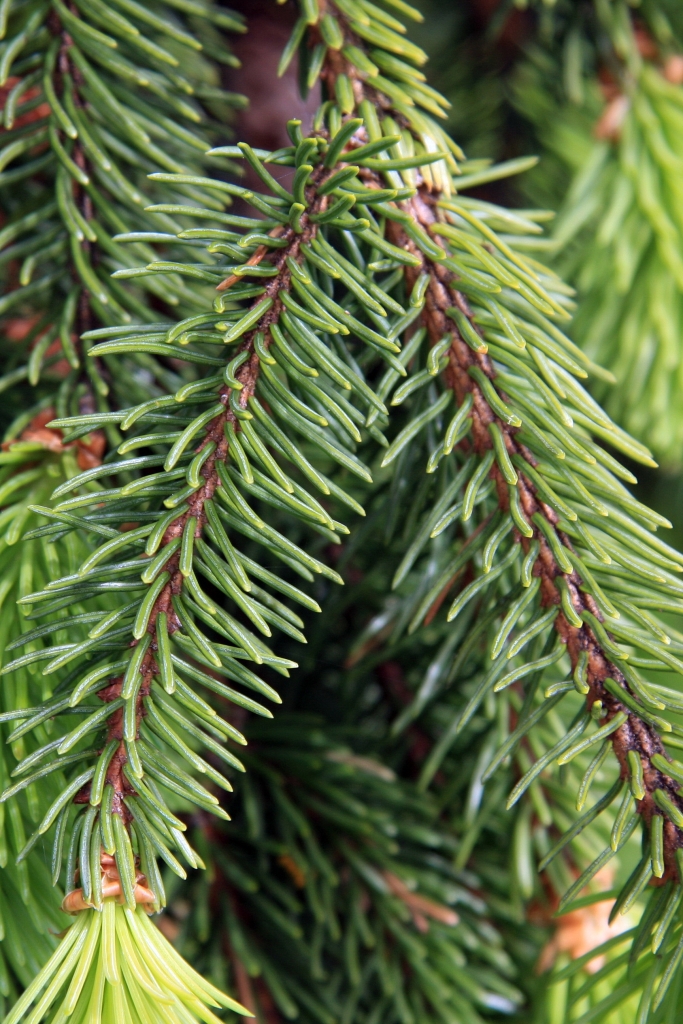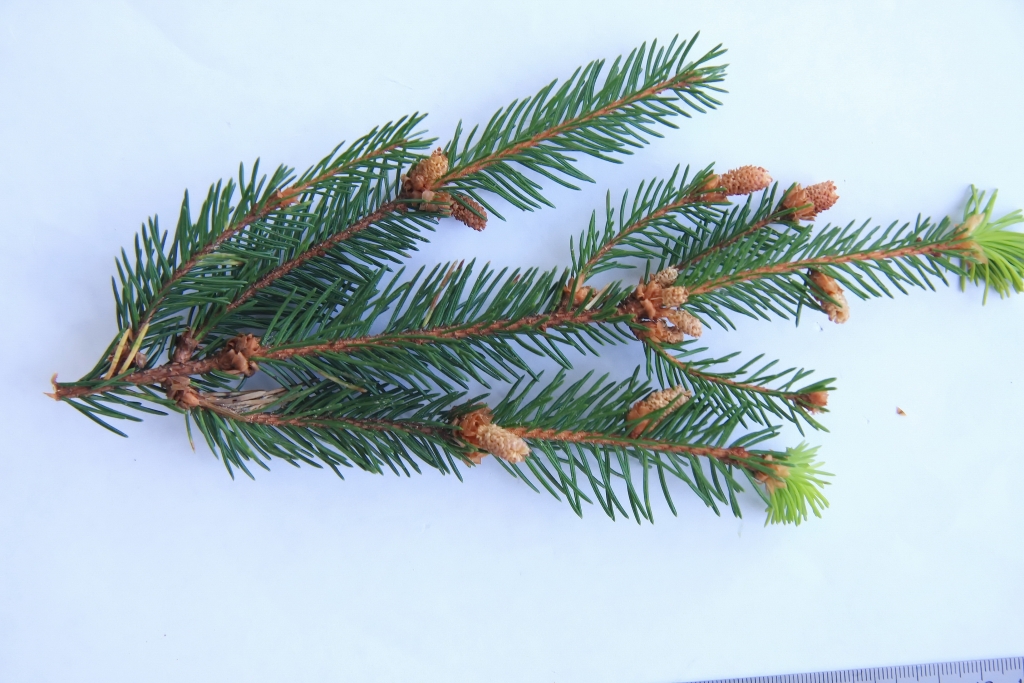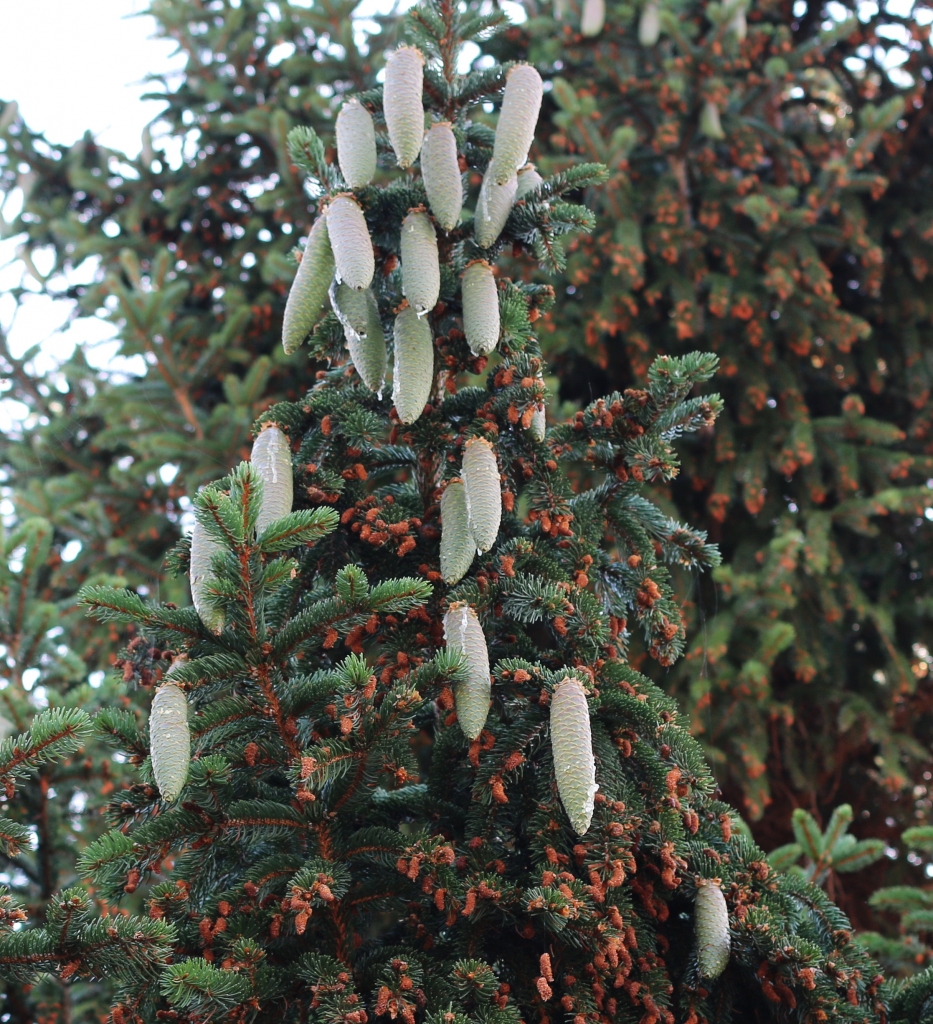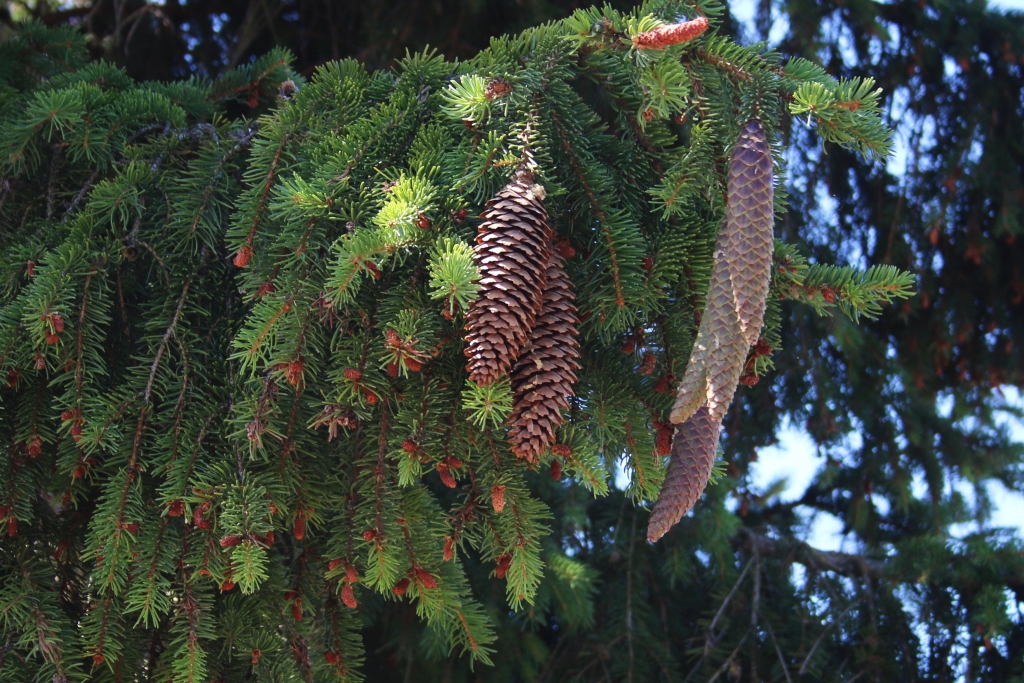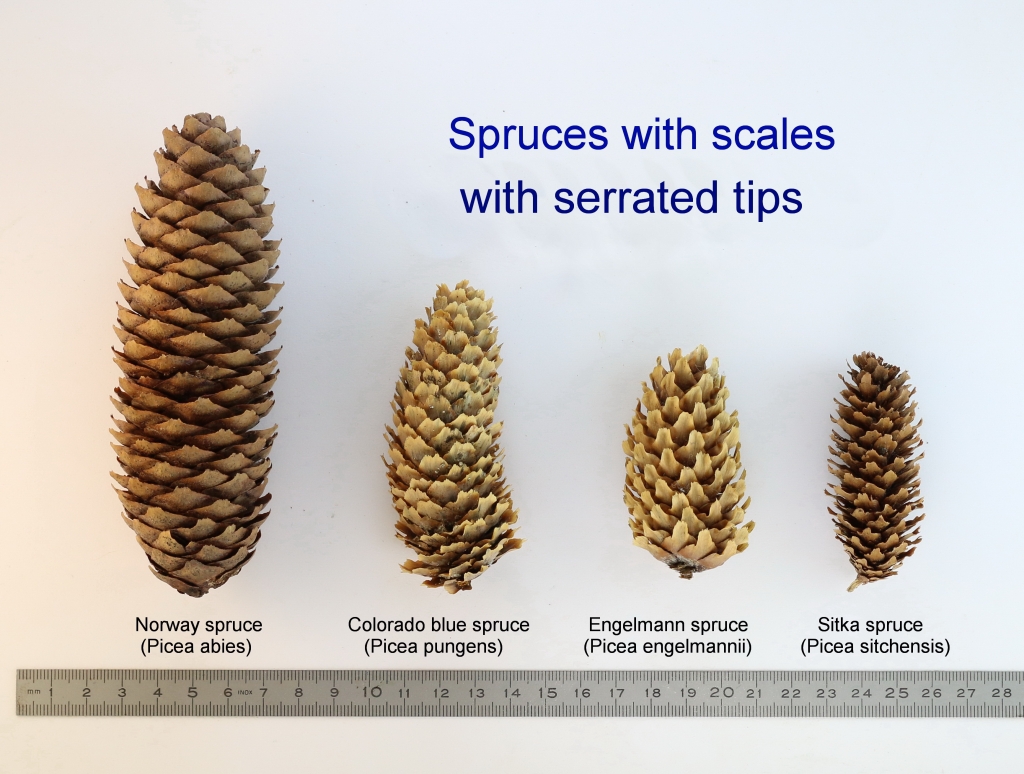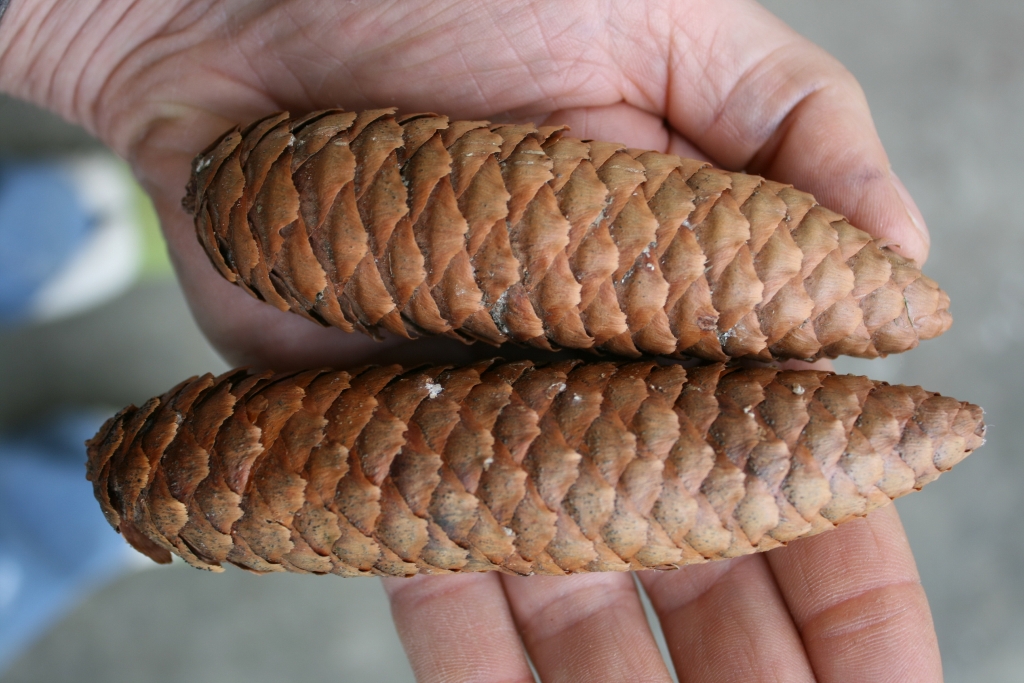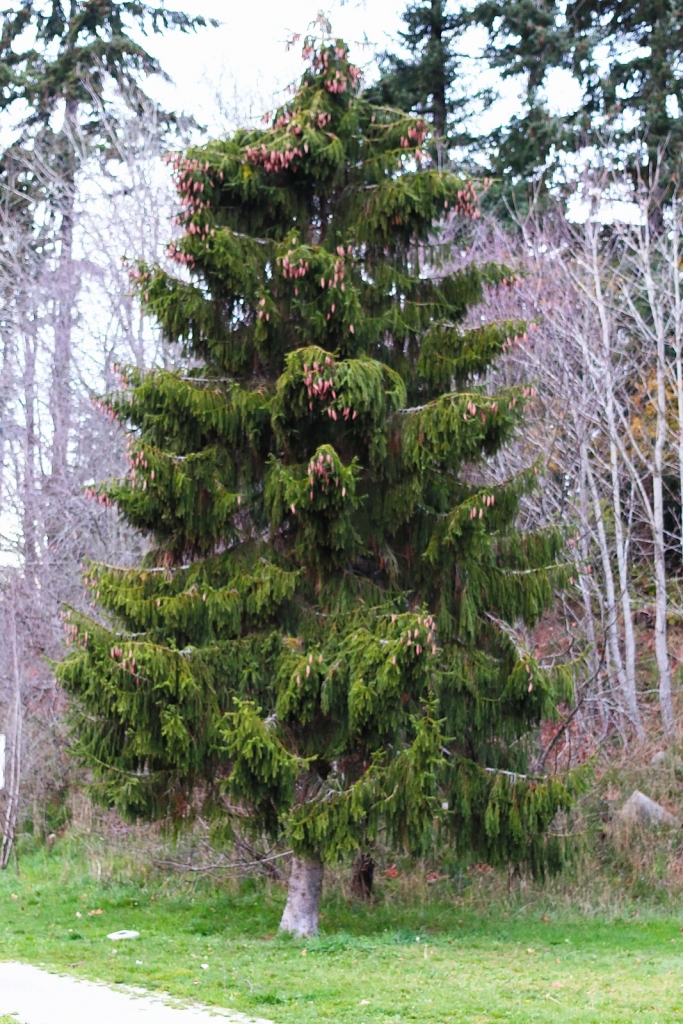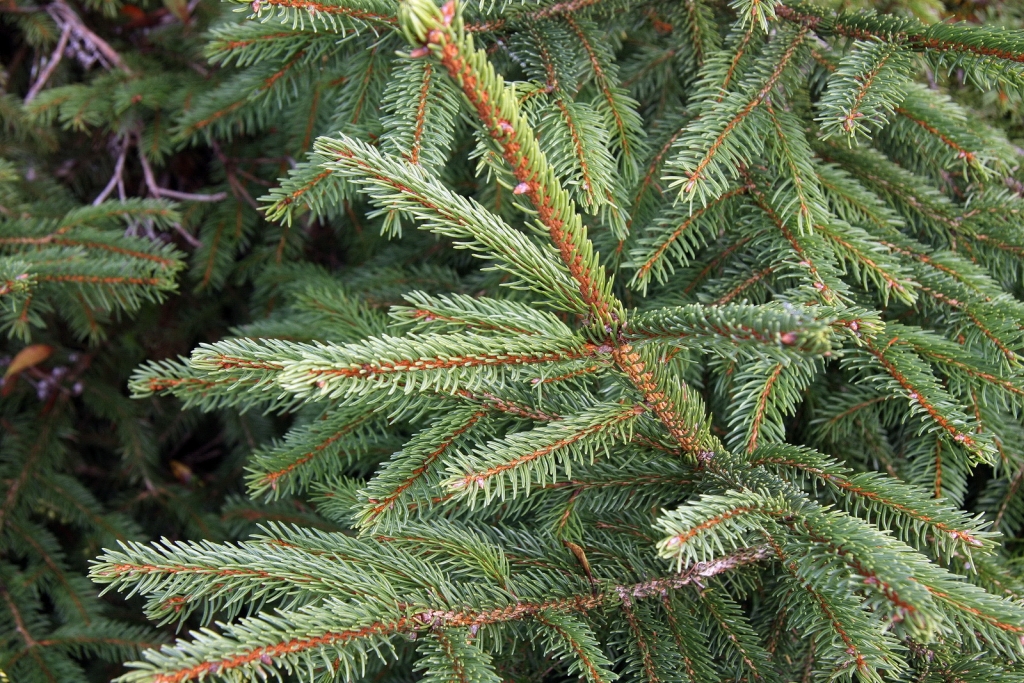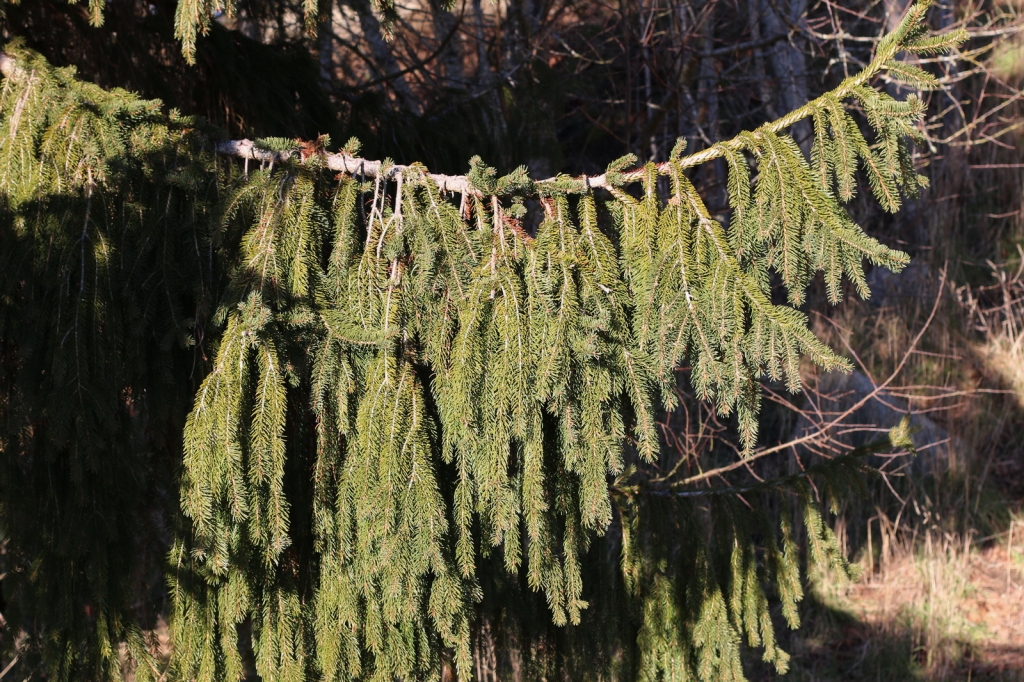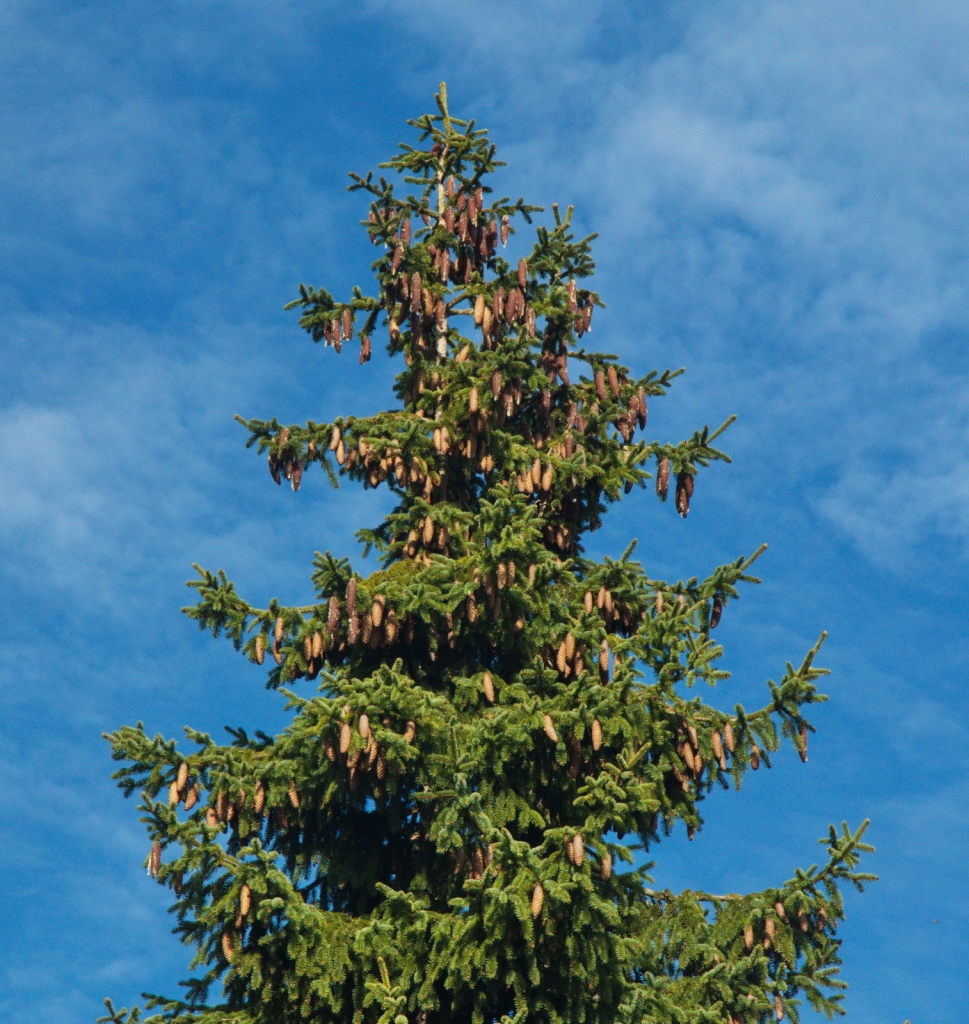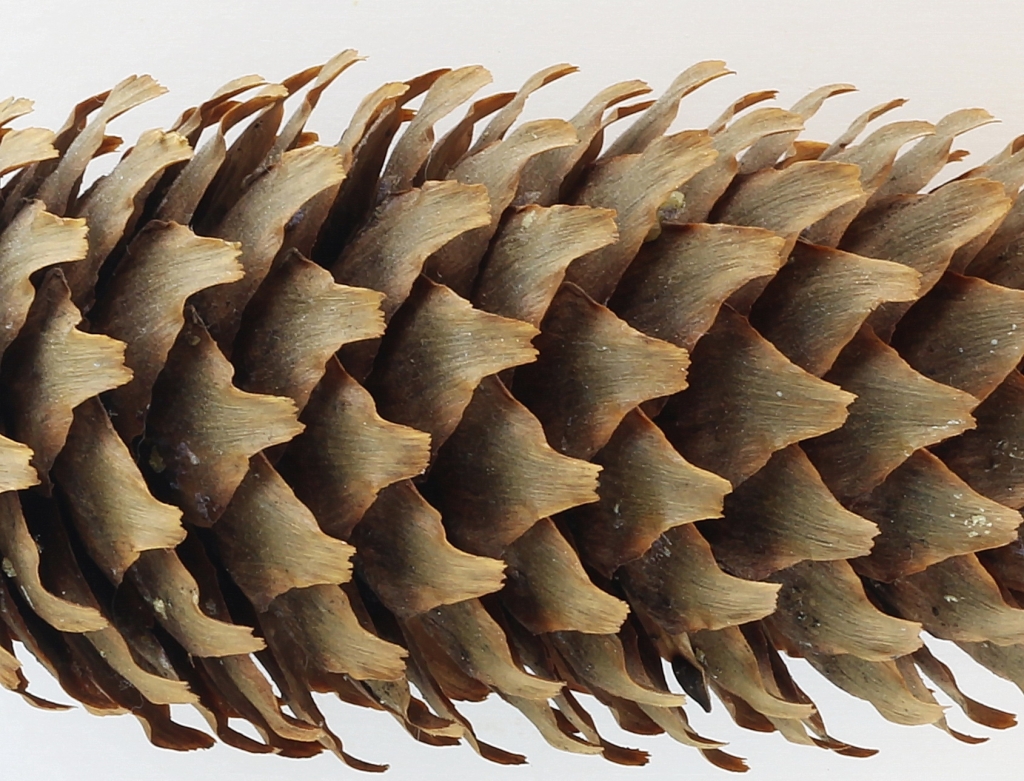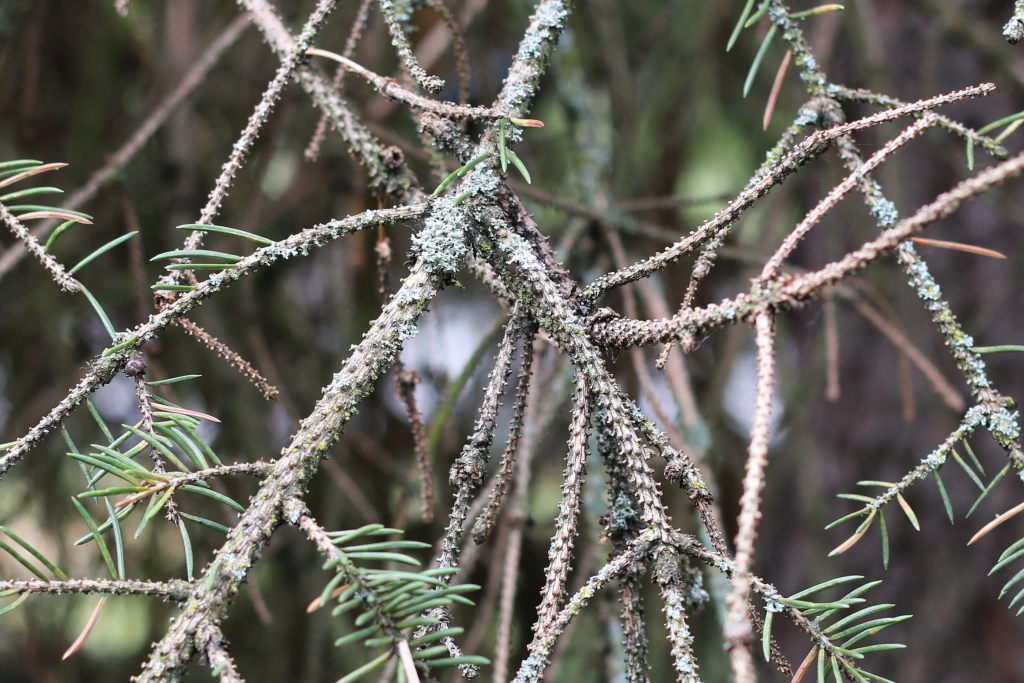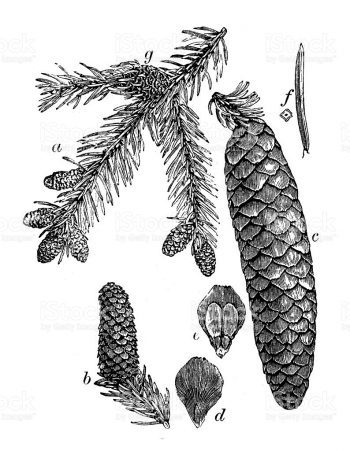
Picea abies, as described in 1881 by (Linnaeus) Hermann Karsten (1817 - 1908), in Deutsche Flora. Pharmaceutisch-medicinische Botanik, is commonly known as Norway spruce; as well as epicéa commun in the French language; épinette de Norvège in French Canadian; as gemeine fichte in German; and as ель евÑ'опейÑÐºÐ°Ñ (yel' yevropeyskaya) in Russian. The species name reflects early confusion between the spruces (Picea) and the silver firs (Abies) before the generic concepts stabilized into their present form.
Ethnobotany. A timber tree of major economic importance throughout the cool temperate areas of Europe. The commonest tree used for Christmas trees in the United Kingdom, despite its poor suitability for this purpose, with the leaves soon shed as it dries out. A herbal tea can be made from the leafy twigs and is reputed to have various curative powers, not tested medicinally.
Description. Norway spruce is a large, fast-growing evergreen coniferous tree that grows to mature heights of 115 to 180 feet (35 - 55 m) tall with a trunk up to 3 to 5 feet (1 - 1.5 m) in diameter, measured at breast height. It is fast growing when young, up to 3 feet (1 m) per year for the first 25 years under good conditions, but becomes slower once over 60 feet (20 m) tall.
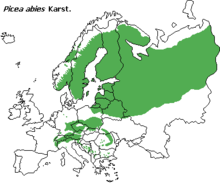
Distribution. Norway spruce grows naturally throughout Europe from Norway in the northwest and Poland eastward, and also in the mountains of central Europe, southwest to the western end of the Alps, and southeast in the Carpathians and Balkans to the extreme north of Greece. The northern limit is in the arctic, just north of 70°N in Norway. Its eastern limit in Russia is hard to define, due to extensive hybridization and inter-gradation with the Siberian spruce (Picea obovata), but is usually given as the Ural Mountains. However, trees showing some Siberian spruce characters extend as far west as much of northern Finland, with a few records in northeast Norway.
Hardy to USDA Zone 3 - cold hardiness limit between -40° and -30°F (-39.9° and -34.4°C).
